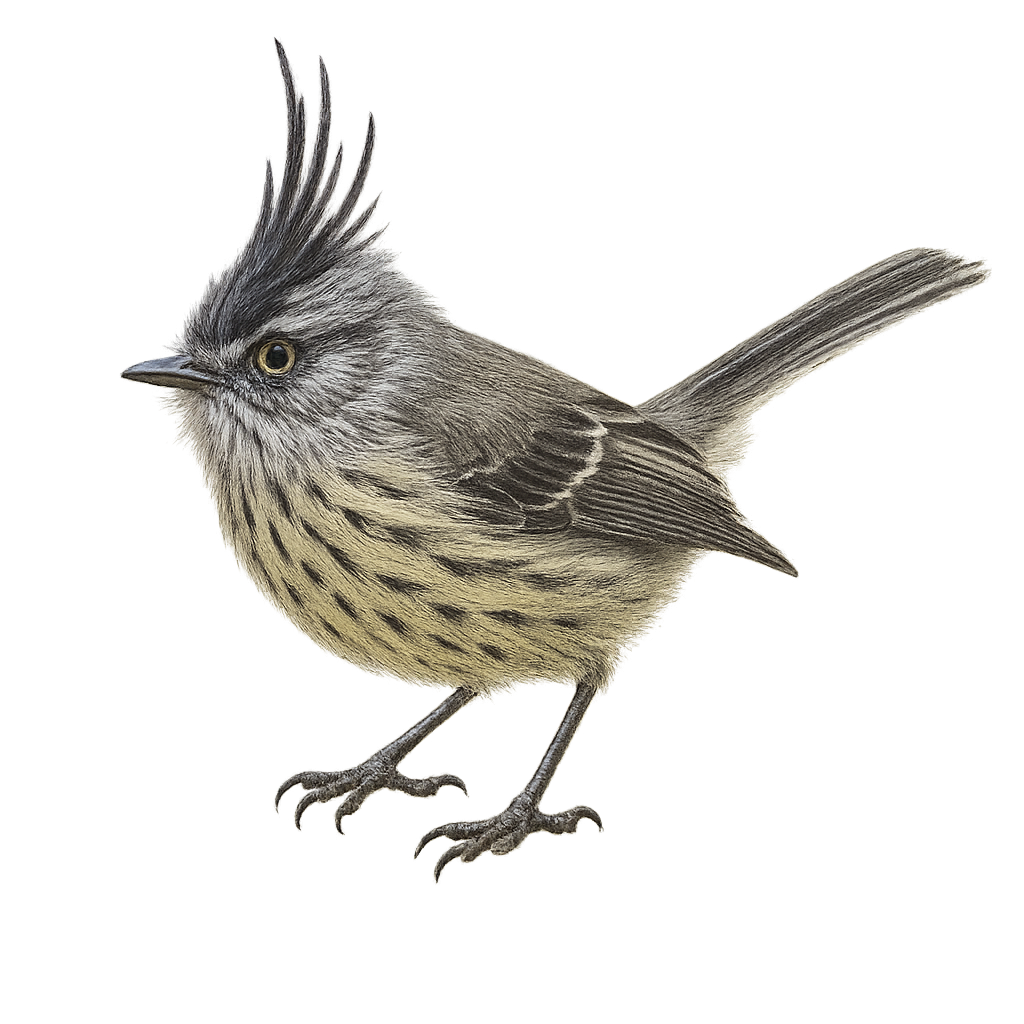Your wildlife photography guide.
Explore the tufted tit-tyrant in detail, study its behavior, prepare your shots.
Where to observe and photograph the tufted tit-tyrant in the wild
Learn where and when to spot the tufted tit-tyrant in the wild, how to identify the species based on distinctive features, and what natural environments it inhabits. The WildlifePhotographer app offers tailored photography tips that reflect the tufted tit-tyrant’s behavior, helping you capture better wildlife images. Explore the full species profile for key information including description, habitat, active periods, and approach techniques.
Tufted Tit-Tyrant
Scientific name: Anairetes parulus

IUCN Status: Least Concern
Family: TYRANNIDAE
Group: Birds
Sensitivity to human approach: Suspicious
Minimum approach distance: 5 m
Courtship display: October to November
Incubation: 14-16 jours
Hatchings: October to December
Habitat:
Montane forests, shrublands, open grasslands
Activity period :
Primarily active during the day, with peak activity in the morning and late afternoon.
Identification and description:
The Tufted Tit-Tyrant, or Anairetes parulus, is a small passerine bird belonging to the Tyrannidae family. It is easily recognizable by its gray and white plumage, adorned with a distinctive tuft on its head. This bird is primarily found in the mountainous regions of South America, notably in Chile, Argentina, Bolivia, and Peru. It inhabits montane forests, shrublands, and open grasslands, often at altitudes ranging from 500 to 4000 meters. The Tufted Tit-Tyrant is an active and agile bird, often seen hopping from branch to branch in search of insects. Although it is relatively not very shy, it can be challenging to spot due to its small size and lively behavior.
Recommended lens:
400 mm – adjust based on distance, desired framing (portrait or habitat), and approach conditions.
Photography tips:
To photograph the Tufted Tit-Tyrant, it is advisable to use a 400mm lens or longer to capture detailed images of this lively bird. Look for it in montane forests and shrublands where it is most active. Be patient and discreet, as although it is not very shy, it can be challenging to spot due to its small size and quick movements. Early morning hours are best for optimal lighting and increased bird activity.
The WildlifePhotographer App is coming soon!
Be the first to explore the best nature spots, track rutting seasons, log your observations, and observe more wildlife.
Already 1 431 wildlife lovers subscribed worldwide

